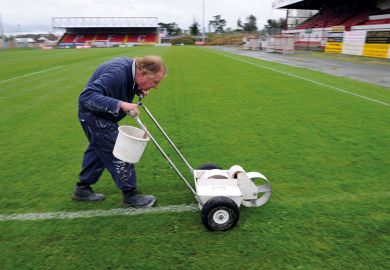In the lab, it’s easy to fall into this pattern: you plan one experiment and then, while you’re in the process of setting it up, you’re already planning the next one and the one after that. But all the experiments are conditional on the success of the first one. And then, because this is science after all, the initial experiment doesn’t work and you’re left devastated. Sound familiar? It certainly does to me! My plans for weeks are in ruins after the first experiment fails. It’s an all too common pattern, especially in the early phases of my PhD.
And there is another common pattern that at first glance seems to be distinct from this: haphazardly planning unconnected experiments, stumbling from lab week to lab week and hoping for a breakthrough.
But during my PhD, I’ve come to realise that the origin of both these patterns is a lack of focus. Not the I-can’t-concentrate-even-after-three-coffees lack of focus, but the one that comes when you don’t have an overarching goal and purpose. Of course I focused on the planning, execution and analysis of my experiments. Yet I realised that I was lacking the other sort of focus, the higher-level focus of my project and my research.
Like most PhDs, I read a lot and I try to expose myself to diverse topics, picking up nonfiction books from all corners of academia. So it was actually twice that I independently stumbled upon the concept of “commander’s intent”.
The first time was in Made to Stick: Why Some Ideas Survive and Others Die by Chip and Dan Heath and the second was in the stellar Superforecasting: The Art and Science of Prediction by Philip Tetlock and Dan Gardner. Commander’s intent (or if you prefer the slightly tongue-in-cheek abbreviation, CSI) refers to a concept in military planning that I think carries great value for a whole range of situations, one of which is the lab work in a research project.
Military commanders like to plan really well. In fact, they plan in a style similar to the first experiment routine I mentioned, building on the assumed success of previous steps.
But, to paraphrase the great Prussian general Helmuth von Moltke, no battle plan survives contact with the enemy. The whole plan can be derailed by weather vagaries or a wrong turn on the road. Analogous mishaps can (and did) happen to me at any given time in the lab. Like the time it took weeks of cloning a stubborn plasmid I needed for an experiment, which stalled my sequence of planned experiments.
Enter commander’s intent. To combat the uncertainties of war, the military established a system in which the actual intent of the order was written on top. So in addition to how the officer or soldier should fulfil their duties, commander’s intent ensured that the why was also evident. In fact, the why on every order should be so abundantly clear that it’s understandable for soldiers several ranks lower than the recipient of the order.
What this enables is flexibility. The true goal of a defence assignment, for example, is probably not holding the bridge but rather barring enemy access to the other side of the river. As soon as the true goal of the mission is made clear, alternative actions can be independently taken in case of adversity.
The same is true in research. I realised that what you’re doing is far less important than why you do it.
So I began to live by commander’s intent by constantly reminding myself of the overarching goal of my current actions. Sometimes I get the feeling that I’m more of a foot soldier while I’m conducting the experiments. But while I’m planning out the research project in the first place I’m in the general’s role. That’s why I have to break it down and always keep the long-term goal in my head.
Now when I run into problems with a plasmid that doesn’t want to be cloned, I think of a different way or a different experiment to achieve my overarching goal instead of wasting weeks on a recalcitrant plasmid. Now when an experiment fails, I’m considerably less discouraged because I know that the goal still stands unperturbed and I just have to find another way to get to it. Now I have the goal to guide me. It’s not only a lot healthier for myself, but I believe it also makes me a more effective scientist.
Daniel Bojar is a PhD student in the department of Biosystems Science and Engineering at ETH Zurich.
Register to continue
Why register?
- Registration is free and only takes a moment
- Once registered, you can read 3 articles a month
- Sign up for our newsletter
Subscribe
Or subscribe for unlimited access to:
- Unlimited access to news, views, insights & reviews
- Digital editions
- Digital access to THE’s university and college rankings analysis
Already registered or a current subscriber?




